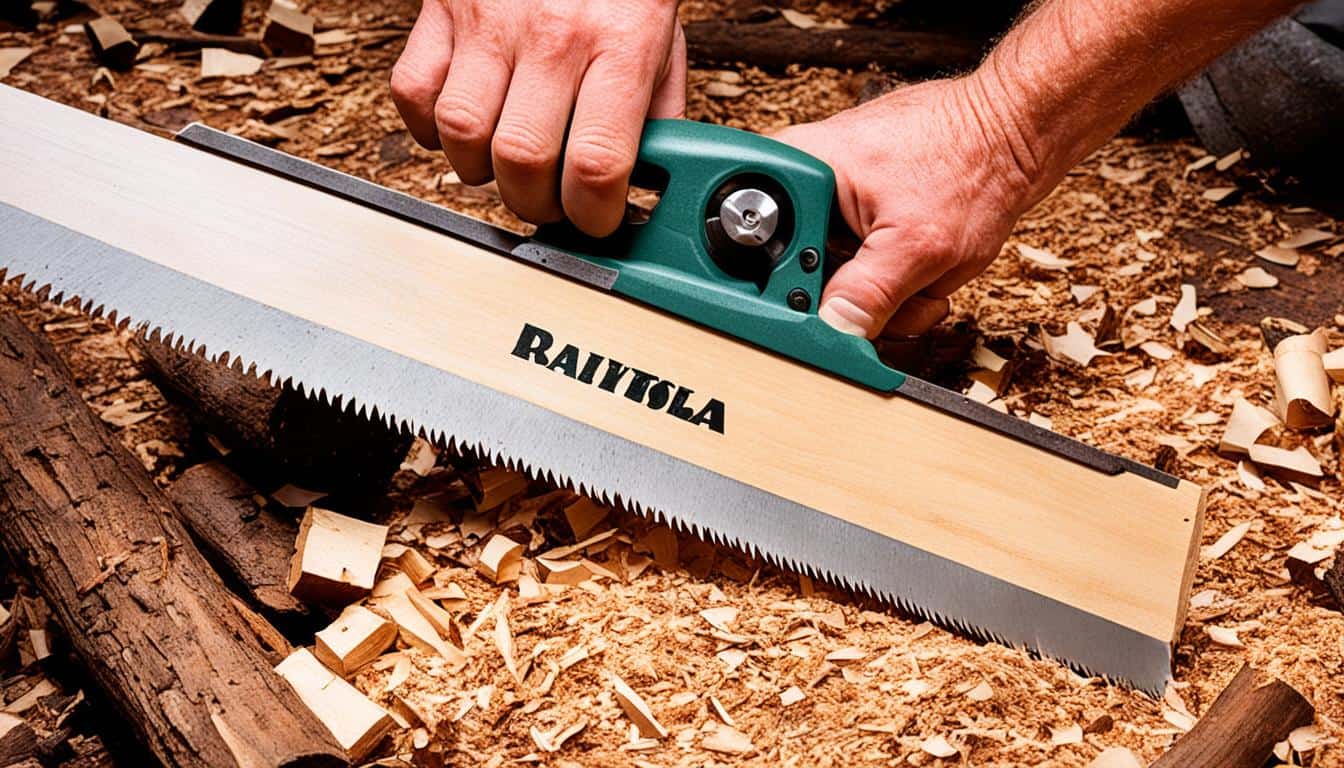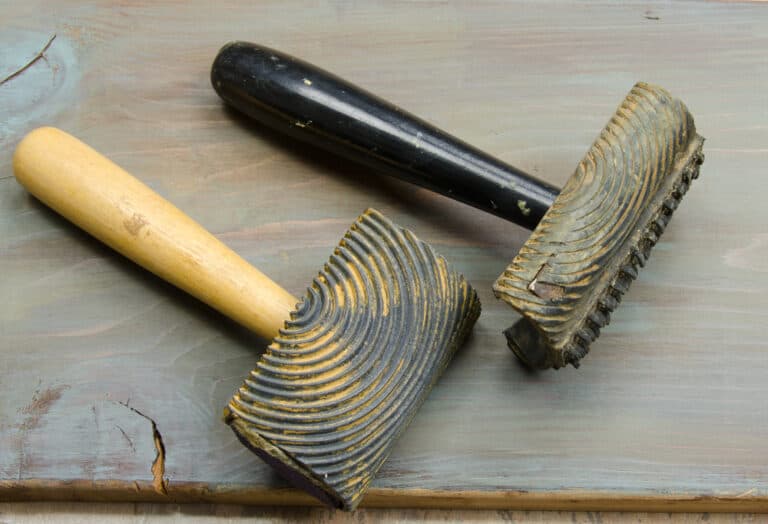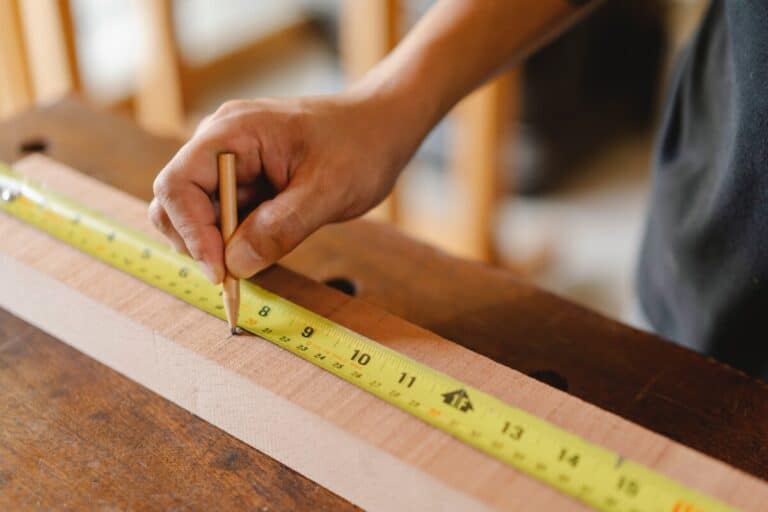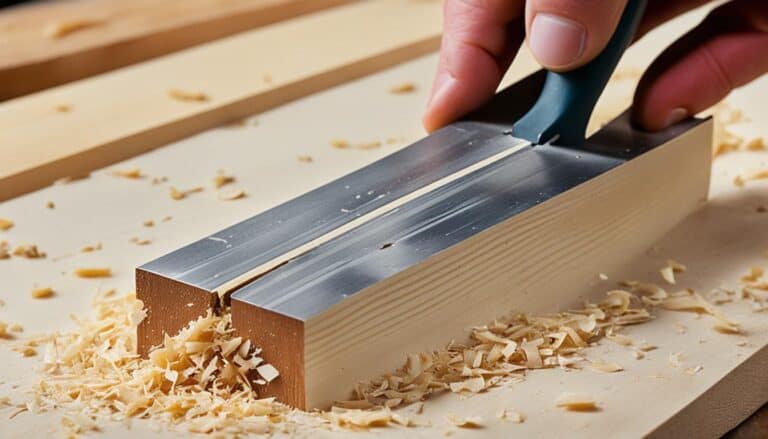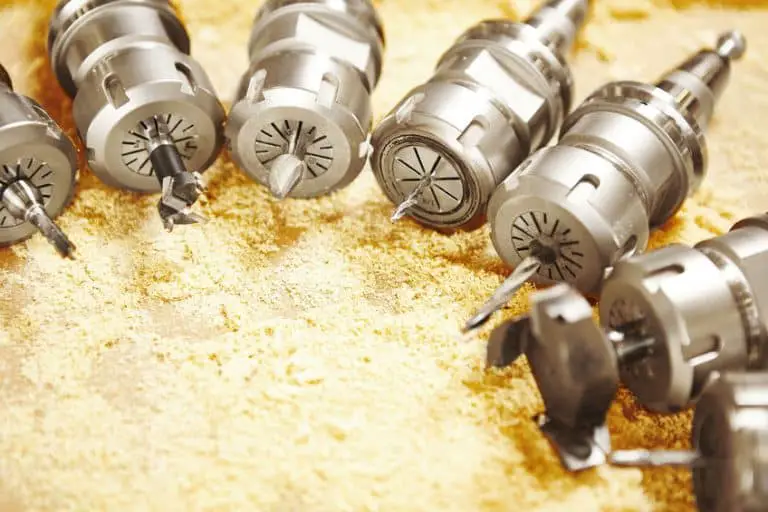The best hand saw for wood is an essential tool for any woodworker. With so many options available, it can be overwhelming to choose the right one. In this article, we will provide you with a comprehensive guide to help you find the best hand saw for wood. We have gathered data from multiple sources to compile a list of the top picks and provide detailed reviews for each one.
Key Takeaways:
- Choosing the right hand saw is crucial for woodworking projects.
- Consider factors such as blade length, tooth shape, tooth count, construction, and grip.
- There are various types of hand saws available, each suitable for different woodworking tasks.
- Regular maintenance, including sharpening, will improve the longevity and performance of your hand saw.
- Don’t forget to read reviews and compare features before making a purchase.
Best Overall Hand Saw
The IRWIN Coarse Cut ProTouch is our top pick for the best overall hand saw. With a blade length of 15 inches and teeth per inch of 12 up front and 9 on the rest of the blade, this hand saw is versatile and can be used for a variety of tasks. It features small teeth upfront to help start the initial cut, universal use for different projects, a comfortable handle, and a well-balanced design. Although the handle extends below the teeth, which requires stopping short of a full push stroke, the IRWIN Coarse Cut ProTouch offers excellent performance and is a favorite among users.
Features:
- Blade length: 15 inches
- Teeth per inch: 12 up front, 9 on the rest of the blade
- Small teeth upfront for easy starting cut
- Universal use for different projects
- Comfortable handle
- Well-balanced design
Best Bang for Your Buck
If you’re on a budget and looking for an affordable hand saw, the Craftsman 15-Inch is a great option. With a blade length of 15 inches and 8 teeth per inch, this hand saw is perfect for quick cutting actions. It may not have the same weight and sturdiness as higher-quality saws, but it offers fast cutting and a comfortable handle.
Keep in mind that the blade binds easily and can bend if bent by more than two degrees. Despite these minor drawbacks, the Craftsman 15-Inch hand saw is a reliable tool for occasional use.
| Pros | Cons |
|---|---|
|
|
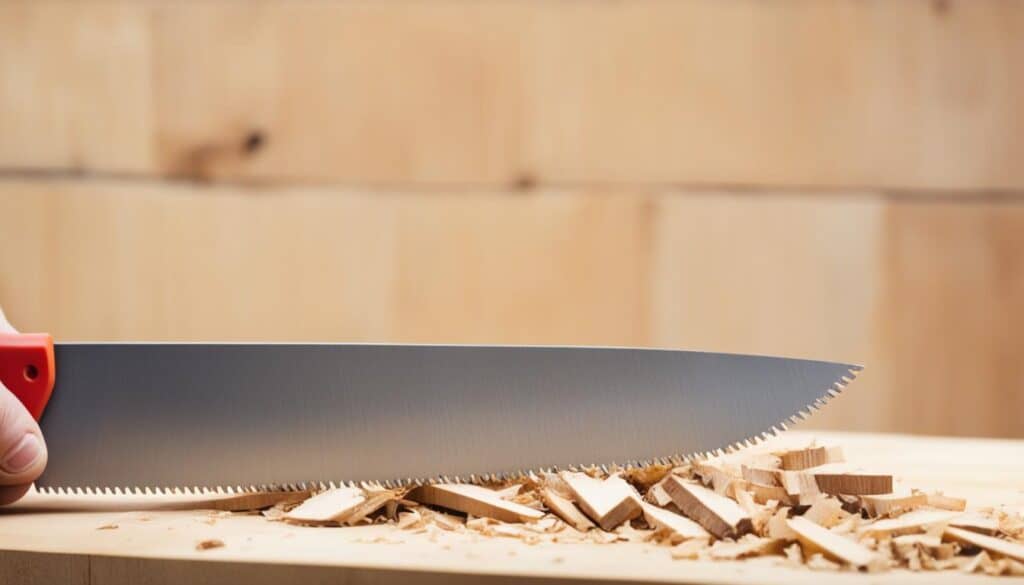
Best Saw for Fine Woodworking
When it comes to fine woodworking, the Gyokucho 7″ Razor Ryoba Saw is the ideal hand saw. With a blade length of 7.1 inches and rip cuts of 8 teeth per inch and crosscuts of 17 teeth per inch, this precision hand saw is designed for detail work and intricate cuts like dovetails.
Unlike other saws in this category, the Gyokucho 7″ Razor Ryoba Saw provides clean cuts with minimal blowout, ensuring precise and professional results for your woodworking projects. Its comfortable handle allows for extended use without discomfort or fatigue.
The double-sided blade is designed for versatility, with one side specifically for crosscuts and the other for rip cuts. This feature eliminates the need for multiple saws, making it a convenient and efficient choice for fine woodworking tasks.
While through-cuts may take longer due to the nature of the blade, the Gyokucho 7″ Razor Ryoba Saw offers unmatched precision and control, making it an essential tool for any fine woodworker.
With its high-quality construction and exceptional performance, the Gyokucho 7″ Razor Ryoba Saw is a must-have for woodworking enthusiasts who value accuracy and craftsmanship.
Best Arbor Saw
If you’re an arborist or frequently work with tree limbs and branches, the Silky Zubat Arborist 330 hand saw is the perfect tool for you. With a blade length of 13 inches and 4.7 teeth per inch, this hand saw is designed specifically for arborists and outdoor enthusiasts.
The Silky Zubat Arborist 330 hand saw provides clean and precise cuts, making it ideal for pruning and trimming trees. Its well-balanced design and full tang blade ensure stability and control during use.
This arborist hand saw is also portable, allowing you to easily carry it to different job sites. It comes with a locking sheath, ensuring safe and convenient transportation.
While the angled blade of the Silky Zubat Arborist 330 hand saw may not be suitable for cutting milled lumber, it excels at its intended purpose of tree limb and branch cutting.
Highlighted Features:
- Blade length: 13 inches
- Teeth per inch: 4.7
- Designed for arborists and outdoor enthusiasts
- Provides clean and precise cuts
- Well-balanced with a full tang blade
- Portable with a locking sheath
If you’re looking for a reliable and efficient hand saw for your arborist needs, the Silky Zubat Arborist 330 is the top choice.
| Blade Length | Teeth per Inch | Designed For | Features |
|---|---|---|---|
| 13 inches | 4.7 | Arborists and outdoor enthusiasts | – Provides clean and precise cuts – Well-balanced with a full tang blade – Portable with a locking sheath |
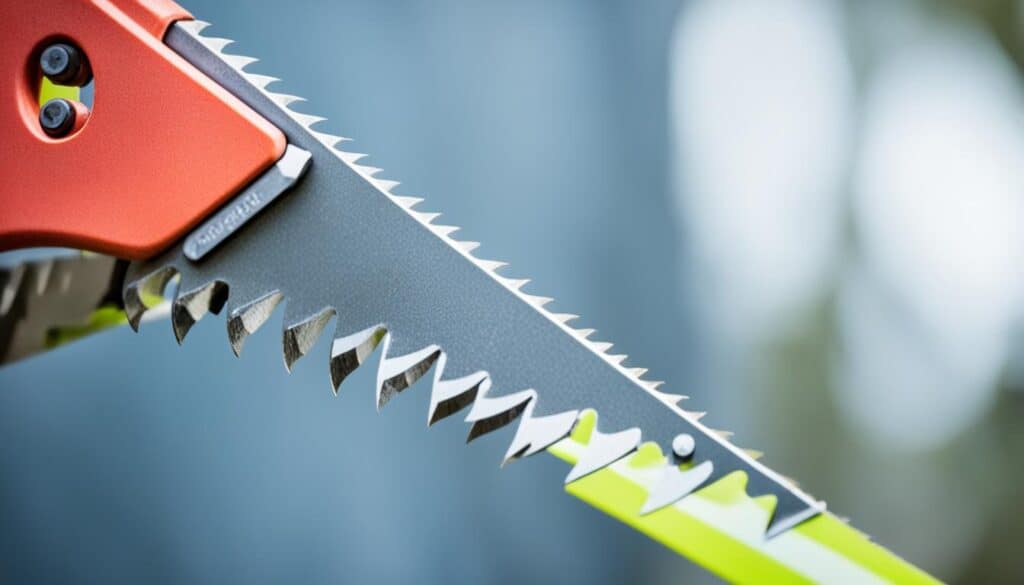
Another Excellent Pull Saw
The SUIZAN Japanese Pull Saw is a high-quality pull saw that excels at fine woodworking tasks. With a blade length of 9.5 inches and rip cuts of 9 teeth per inch and crosscuts of 15 teeth per inch, this hand saw provides clean cuts with minimal blowout. It has double-sided teeth for both rip cuts and crosscuts, allowing for versatile use in different woodworking projects.
The SUIZAN Japanese Pull Saw is specifically designed for precision and accuracy, making it an ideal tool for detailed work where clean and precise cuts are crucial. Whether you’re working on intricate joinery, making delicate cuts, or creating fine woodworking projects, this pull saw delivers exceptional performance.
“The SUIZAN Japanese Pull Saw has transformed my woodworking projects. Its sharp teeth and smooth cutting action make it a joy to use. I highly recommend it for anyone in need of a reliable and accurate pull saw.” – Samuel Turner, Professional Woodworker
While through-cuts may take longer compared to other types of saws, the SUIZAN Japanese Pull Saw compensates with its ability to provide precise and clean cuts, minimizing the need for extensive sanding or finish work. This pull saw is an excellent choice for those who prioritize the quality and accuracy of their woodworking projects.
A Very Accurate Blade with an Inconvenient Handle
The Shark Corp Super FineCut hand saw is known for its accurate cuts. With a blade length of 11 inches and 19 teeth per inch, this hand saw offers an extra fine kerf for clean edges with no blowout.
Despite these drawbacks, the Shark Corp Super FineCut is a well-crafted blade that cuts better than many other hand saws.
Specifications
| Blade Length | Teeth per Inch |
|---|---|
| 11 inches | 19 TPI |
However, the blade can bend easily and the pistol grip handle may not be intuitive to the pulling motion. It is important to note these limitations when considering the Shark Corp Super FineCut hand saw. Despite the inconveniences, it remains a top choice for those seeking precision in their woodworking projects.
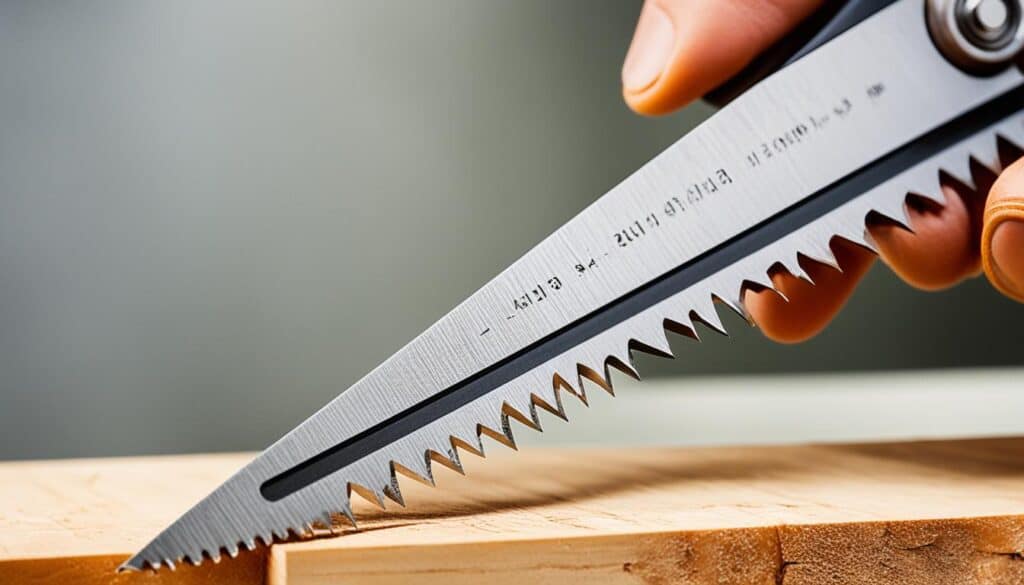
Pros of the Shark Corp Super FineCut hand saw
- Accurate and clean cuts
- Extra fine kerf
Cons of the Shark Corp Super FineCut hand saw
- Blade can bend easily
- Pistol grip handle may not be intuitive for pulling motion
What Factors Should I Consider Before Buying a Hand Saw?
Before purchasing a hand saw, there are several factors you should consider. Taking the time to evaluate these factors will help you make an informed decision and choose the best hand saw for your woodworking needs. Here are the key factors to keep in mind:
Type of Hand Saw
First and foremost, think about the type of hand saw that suits your needs. There are various types available, including panel saws, back saws, and frame saws. Each type has its own characteristics and is designed for specific woodworking tasks. Consider the type that aligns with the projects you typically work on.
Tooth Shape
The tooth shape of a hand saw is another important consideration. There are two primary tooth shapes: rip and cross-cut. Rip teeth are designed for cutting along the wood grain, while cross-cut teeth are suitable for cutting across the grain. The tooth shape you choose should depend on the type of cuts you plan to make with your hand saw.
Tooth Count
The tooth count of a hand saw refers to the number of teeth per inch (TPI). Hand saws with larger teeth are suitable for quick cuts, while those with smaller teeth are better for precision work. Consider the type of cuts you’ll be making and choose a hand saw with an appropriate tooth count.
Construction
The construction of the hand saw is another crucial factor to consider. Look for a saw with a sturdy and durable construction that can withstand regular use. Consider the material of the blade and the quality of the handle. A well-constructed hand saw will provide you with reliable performance and long-lasting durability.
Grip
The grip of the hand saw is essential for comfort and control during use. Look for a hand saw with an ergonomic handle that fits comfortably in your hand. A comfortable grip will ensure that you can work for extended periods without strain or discomfort.
Size
The size of the hand saw is another factor to consider. Think about the size of the projects you typically work on and choose a hand saw with a blade length that suits your needs. A longer blade length is suitable for larger projects, while a shorter blade length is more convenient for smaller tasks.
By carefully considering these factors, you can choose the best hand saw for your woodworking projects. Remember to assess your specific needs, preferences, and the type of woodworking you do to make an informed decision.
Can I Sharpen My Hand Saw?
Yes, you can sharpen your hand saw to maintain its cutting performance. Keeping your hand saw sharp is crucial for achieving clean and efficient cuts. Here’s a step-by-step guide on how to sharpen a hand saw:
Gather the necessary tools:
- A tapered file: This file has a triangular shape and is specifically designed for sharpening hand saws.
- A vice: Use a vice to securely hold the saw in place while sharpening.
Sharpening process:
- Secure the hand saw in the vice, ensuring it is stable and won’t move during sharpening.
- Inspect the teeth of the hand saw and identify any dull or damaged areas.
- Start sharpening the hand saw by positioning the tapered file at the base of the first tooth.
- Use smooth and steady strokes to file the tooth, moving the file in the direction of the cutting edge. Be sure to maintain the original tooth shape and count.
- Continue sharpening each tooth individually, ensuring they are uniformly sharpened.
- After sharpening all the teeth, carefully inspect the hand saw to make sure they are all properly sharpened and aligned.
- Once satisfied with the sharpening, remove the hand saw from the vice and clean off any metal filings.
If you’re not confident in your sharpening skills or prefer professional assistance, you can also take your hand saw to a local woodworking shop or hire a professional saw sharpener. They have the expertise and tools to sharpen your hand saw effectively.
Regular sharpening is essential to maintain the cutting performance of your hand saw. It’s recommended to sharpen your hand saw whenever you notice a decrease in cutting efficiency or the formation of jagged, splintered cuts. By sharpening your hand saw regularly, you’ll extend its lifespan and ensure that it continues to cut effectively.
Remember, a sharp hand saw not only makes your woodworking tasks easier but also allows for more precise and cleaner cuts. Don’t overlook the importance of sharpening and invest the time and effort to keep your hand saw in top condition.
| Advantages of Sharpening Your Hand Saw | Disadvantages of Not Sharpening Your Hand Saw |
|---|---|
|
|
What Can I Use a Hand Saw For?
A hand saw is a versatile tool that can be used for a variety of woodworking tasks. Whether you’re a professional woodworker or a DIY enthusiast, a hand saw is an essential tool in your toolkit. Here are some common uses and tasks for a hand saw:
Cutting Wood
One of the primary uses of a hand saw is cutting wood. Whether you’re building furniture, making repairs, or working on a woodworking project, a hand saw allows you to cut wood into different shapes and sizes. It can be used for cross-cutting, ripping, and making precise cuts on various wood materials.
Creating Joints
A hand saw is also used to create joints in woodworking. Whether it’s a simple butt joint, a more complex dovetail joint, or any other joint, a hand saw allows you to make precise cuts to create strong and secure connections between wood pieces.
Cutting Plastic
Depending on the type of saw and blade you have, a hand saw can also be used to cut plastic materials. This can be useful for various projects, such as making repairs, crafting prototypes, or creating custom pieces.
Cutting Metal
With the right type of hand saw and blade, you can even cut metal using a hand saw. However, it’s important to note that not all hand saws are designed for cutting metal. If you plan to cut metal, make sure you have a hand saw specifically designed for metal cutting, as they have different tooth designs and blade materials to handle the hardness of metal.
No matter what task you’re tackling, a hand saw provides the flexibility and control needed to achieve precise cuts. From woodworking to plastic and metal cutting, a hand saw is a versatile tool that’s worth having in your workshop.
| Common Tasks for a Hand Saw |
|---|
| Cutting wood into different shapes and sizes |
| Cross-cutting and ripping wood |
| Making precise cuts on various wood materials |
| Creating joints in woodworking |
| Cutting plastic materials |
| Cutting metal (with the right type of hand saw and blade) |
Can I Cut Metal with My Hand Saw?
Depending on the type of hand saw and blade you have, you may be able to cut metal. However, it’s important to note that not all hand saws are designed for metal cutting.
If you plan to cut metal, make sure you have a hand saw specifically designed for metal cutting. These saws typically have a different tooth design and blade material to handle the hardness of metal.
Always follow the manufacturer’s recommendations and safety guidelines when cutting metal with a hand saw.
How Can I Choose the Best Hand Saw?
Choosing the best hand saw for your woodworking needs can be a daunting task. With so many options available, it’s important to consider several factors to make the right choice. Here are some tips to help you choose the best hand saw:
- Determine your specific needs: Consider the types of woodworking projects you’ll be working on. Different hand saws are designed for specific tasks, such as cross-cutting, ripping, or fine woodworking.
- Blade length: The blade length of a hand saw determines the depth of cut it can make. Longer blades are suitable for cutting larger pieces of wood, while shorter blades offer more control and precision.
- Tooth shape and count: The tooth shape and count affect the type of cuts a hand saw can make. Rip-cut teeth are designed for cutting along the grain, while cross-cut teeth are ideal for cutting across the grain. Consider the tooth count as well, with larger teeth providing faster cuts and smaller teeth offering more precision.
- Construction and materials: Look for hand saws with durable construction and high-quality materials. A well-crafted hand saw will last longer and provide better performance.
- Comfort and grip: The handle of a hand saw should be comfortable to hold and provide a secure grip. Consider the shape, material, and ergonomics of the handle when making your choice.
By considering these tips and evaluating your specific needs, you can choose the best hand saw that will make your woodworking projects easier and more enjoyable.
Tips from Experts
“When choosing a hand saw, it’s important to prioritize comfort and control. Look for a handle that feels comfortable in your hand and allows for a secure grip. Additionally, consider the weight and balance of the saw, as this can greatly impact your cutting accuracy and overall satisfaction with the tool.” – Mark Johnson, Woodworking Expert
Comparison Table: Key Features of Hand Saws
| Blade Length | Tooth Shape | Tooth Count | Construction | Handle Grip | |
|---|---|---|---|---|---|
| IRWIN Coarse Cut ProTouch | 15 inches | Universal | 12 up front, 9 rest of the blade | Durable | Comfortable |
| Craftsman 15-Inch | 15 inches | Universal | 8 | Affordable | Comfortable |
| Gyokucho 7″ Razor Ryoba Saw | 7.1 inches | Rip and crosscuts | 8 rip, 17 crosscuts | Precision | Comfortable |
| Silky Zubat Arborist 330 | 13 inches | Universal | 4.7 | Sturdy | Secure |
| SUIZAN Japanese Pull Saw | 9.5 inches | Rip and crosscuts | 9 rip, 15 crosscuts | Precision | Comfortable |
Refurbish and Sharpen Your Hand Saws
Over time, hand saws may become dull or show signs of wear. However, you can refurbish and sharpen your hand saws to maintain their cutting performance. Refurbishing may involve cleaning the blade, tightening loose parts, and replacing damaged handles. Sharpening can be done using a tapered file or a specialized saw file. It’s important to maintain the correct tooth shape and count during the sharpening process. Regular maintenance and sharpening will extend the life of your hand saws and ensure they continue to cut effectively.
When refurbishing your hand saw, start by inspecting the blade for any rust or debris. Clean the blade with a solution of warm water and mild soap, and use a brush to remove any stubborn dirt. Dry the blade thoroughly to prevent rust formation.
Next, check for any loose parts or handle screws. Tighten them properly to ensure stability and prevent accidents during use. If the handle is damaged or cracked, consider replacing it with a new one for better grip and control.
Now, let’s move on to sharpening your hand saw. This process will help restore the cutting performance of the blade. Get a tapered file or a specialized saw file, ideally with the same tooth shape and size as your hand saw.
Before you begin sharpening, secure the hand saw blade in a vice to prevent accidents and maintain stability. Make sure the blade is positioned at a comfortable working height for easy access.
Hold the file at the same angle as the existing teeth and apply even pressure as you file each tooth. Use long, smooth strokes in the direction of the teeth. Take your time to ensure each tooth is properly sharpened, maintaining consistent angles and tooth shape throughout the process.
Remember, sharpening a hand saw requires patience and precision. It’s crucial to maintain a consistent angle and tooth spacing to ensure proper cutting performance.
Once you’ve completed the sharpening process, carefully remove any metal filings from the blade to prevent them from interfering with the sawing action.
Regular maintenance and sharpening are essential to keep your hand saws in excellent condition. By investing time in refurbishing and sharpening, you’ll significantly extend the lifespan of your hand saws and enjoy efficient, smooth cuts every time you use them.
| Refurbishing and Sharpening Tips: |
|---|
| 1. Clean the blade: Inspect the blade for rust or debris. Clean it with warm water and mild soap. |
| 2. Tighten loose parts: Check for any loose parts or handle screws and tighten them properly. |
| 3. Replace damaged handles: If the handle is damaged or cracked, consider replacing it with a new one for better grip and control. |
| 4. Use the right file: Get a tapered file or a specialized saw file with the same tooth shape and size as your hand saw. |
| 5. Secure the blade: Use a vice to hold the hand saw blade securely while sharpening. |
| 6. Sharpen with precision: Maintain a consistent angle and tooth spacing as you file each tooth. |
| 7. Remove metal filings: After sharpening, carefully remove any metal filings to prevent interference with the sawing action. |
Make Your Own Hand Saws
For those interested in woodworking and hand tool making, it is possible to make your own hand saws. This can be a rewarding and creative process that allows you to customize the design and functionality of your hand saw. However, making hand saws requires advanced woodworking skills and access to specialized tools and materials. It is recommended for experienced woodworkers who are familiar with metalworking and have a thorough understanding of hand saw design and operation. There are also DIY resources and tutorials available online for those interested in making their own hand saws.
If you have the skills and tools required, making your own hand saw can be a unique and fulfilling project. It allows you to tailor the saw to your specific needs and preferences. Whether you want a specific tooth configuration, blade length, or handle design, creating your own hand saw gives you the freedom to choose every aspect of its construction.
When making a hand saw, you will need to consider the type of wood or metal you will use for the handle, the type of blade you will use for the cutting edge, and the overall design and dimensions of the saw. It’s important to have a clear plan and understanding of the purpose your hand saw will serve.
Before embarking on the journey of making your own hand saw, it’s essential to acquire the necessary skills and knowledge. Familiarize yourself with woodworking techniques and metalworking processes. Study the principles behind hand saw design and the characteristics that affect performance. Take the time to research different saw-making methods, materials, and techniques to ensure you create a functional and efficient hand saw.
For those interested, there are DIY resources available online that provide step-by-step instructions and guidance on making hand saws. These resources offer valuable insights, tips, and techniques to help you successfully complete your project. Whether you choose to follow a specific guide or experiment with your own designs, remember that practice and patience are key to honing your skills and achieving the desired results.
By making your own hand saws, you can not only enjoy the satisfaction of creating a tool from scratch but also personalize it to meet your specific woodworking needs. It’s an opportunity to showcase your craftsmanship and creativity while expanding your knowledge and skills in the world of hand tool making.
Creating your own hand saw is a testament to the art and craft of woodworking. It offers a sense of accomplishment and allows you to have a deeper connection with your tools. Plus, the ability to customize your hand saw to suit your preferences and woodworking style is invaluable.
Benefits of Making Your Own Hand Saws
- Customization: When you make your own hand saw, you have complete control over every aspect of its design, allowing you to tailor it to your specific needs and preferences.
- Quality Control: By crafting your own hand saw, you can ensure the use of high-quality materials and meticulous workmanship, resulting in a tool that meets your standards of excellence.
- Understanding and Mastery: Through the process of making a hand saw, you gain a deeper understanding of hand tool design and operation, further enhancing your woodworking skills and knowledge.
- Personal Connection: When you make your own hand saw, you develop a personal connection to the tool, making it more than just a tool but an extension of your craftsmanship and creativity.
While making your own hand saws requires advanced skills and knowledge, the rewards are worth the effort. It’s a journey of self-discovery and a testament to your passion for woodworking and hand tool making. So if you’re up for the challenge, grab your tools and materials and embark on the fulfilling adventure of creating your own hand saw.
Conclusion
In conclusion, finding the best hand saw for wood is essential for any woodworker. Whether you’re looking for a versatile all-around hand saw, an affordable option, or one specifically designed for fine woodworking, there are plenty of options available. Consider factors such as blade length, tooth shape, tooth count, construction, and grip when making your decision. Regular maintenance, including sharpening, will ensure that your hand saw continues to perform at its best. With the right hand saw, you can tackle any woodworking project with precision and efficiency.
Additional Recommendations
In addition to the hand saws mentioned in this article, there are several other options available on the market that you may consider for your woodworking projects. Some reputable brands that offer a variety of hand saws for different needs include A.F. Shotwell, Adria, Florip, Lie-Nielsen, Rob Cosman, Thomas Flinn, Wenzloff & Sons, and Wheeler, Madden & Clemson. These brands have a strong reputation in the woodworking community and are known for producing high-quality hand saws.
When choosing a hand saw, it’s important to read reviews and compare features to ensure that it meets your specific requirements. Consider factors such as blade length, tooth shape, tooth count, construction, and grip. Each brand may offer different models that excel in different areas, so it’s worth exploring the options before making a purchase.
Remember, the best hand saw for you ultimately depends on your personal preferences and the nature of your woodworking projects. By considering all available options and doing thorough research, you’re sure to find the perfect hand saw that will help you achieve precise and efficient cuts in your woodworking endeavors.
FAQ
What is the best overall hand saw for wood?
The IRWIN Coarse Cut ProTouch is our top pick for the best overall hand saw. It offers excellent performance and versatility for a variety of woodworking tasks.
What is the best budget-friendly hand saw?
The Craftsman 15-Inch hand saw is a great option for those on a budget. It offers fast cutting and a comfortable handle for occasional use.
What is the best hand saw for fine woodworking?
The Gyokucho 7″ Razor Ryoba Saw is the ideal choice for fine woodworking. It provides clean cuts with minimal blowout and is designed for intricate work.
What is the best hand saw for arborists?
The Silky Zubat Arborist 330 hand saw is perfect for arborists and outdoor enthusiasts. It offers clean cuts and a well-balanced design.
What is a highly recommended pull saw for woodworking?
The SUIZAN Japanese Pull Saw is a high-quality pull saw that excels at fine woodworking tasks. It offers clean cuts and precise accuracy.
What is a hand saw known for its accurate cuts?
The Shark Corp Super FineCut hand saw is known for its extra fine kerf and clean edges. It cuts better than many other hand saws in its class.
What factors should I consider before buying a hand saw?
Consider factors such as the type of hand saw, tooth shape, tooth count, construction, grip, and size when choosing a hand saw for your woodworking projects.
Can I sharpen my hand saw?
Yes, you can sharpen your hand saw to maintain its cutting performance. Regular sharpening will extend the life of your hand saw and ensure it continues to cut effectively.
What can I use a hand saw for?
A hand saw can be used for cutting wood into different shapes and sizes, cross-cutting, ripping, and making precise cuts on various wood materials.
Can I cut metal with my hand saw?
Depending on the type of hand saw and blade you have, you may be able to cut metal. However, not all hand saws are designed for metal cutting, so make sure you have a hand saw specifically designed for that purpose.
How can I choose the best hand saw?
When choosing a hand saw, consider factors such as the type, tooth shape, tooth count, construction, grip, and size that align with your specific needs and preferences.
Can I refurbish and sharpen my hand saws?
Yes, over time, hand saws may become dull or show signs of wear. You can refurbish and sharpen them to maintain their cutting performance, ensuring they continue to cut effectively.
Can I make my own hand saws?
Yes, it is possible to make your own hand saws if you have advanced woodworking skills and access to specialized tools and materials. However, this is recommended for experienced woodworkers with knowledge of hand saw design and operation.
What are some additional hand saw recommendations?
In addition to the hand saws mentioned in this article, other reputable brands to consider include A.F. Shotwell, Adria, Florip, Lie-Nielsen, Rob Cosman, Thomas Flinn, Wenzloff & Sons, and Wheeler, Madden & Clemson.


